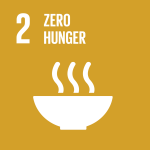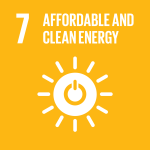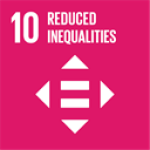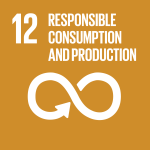
Photo: UNDP Zimbabwe
View the full photo essay by UNDP Climate on Exposure here.
In the 11th Century, a few hours south of present-day Harare, a vibrant farming and trading empire was emerging. At its heart, in the fertile watershed between the Zambezi and the Limpopo rivers, the city known as Great Zimbabwe.
At its height, the empire was estimated to be home to around 18,000 people. Yet by the mid-15th Century, Great Zimbabwe was largely deserted. While the cause remains a mystery, archaeological research suggests famine and water shortages, driven by over-farming and climatic change, may well have been a factor.
Fast forward to today and Zimbabwe, population around 15 million people, is among the 12 fastest-growing economies in Africa.
The country, however, faces a range of environmental and socioeconomic crises, with land degradation and deforestation, overstretched water resources, and loss of biodiversity intersecting with rising inequality and increasing poverty.
Climate change is adding another layer of challenges, at a macro-level threatening key economic sectors, at the ground level threatening infrastructure, livelihoods, and food security.
The increasing unpredictability of seasons and extreme weather are felt particularly in rural communities where farmers are at the mercy of the skies. Droughts, floods, and dry ‘dekads’ – ten-day rain-free periods during the growing season that cause “agricultural drought” – can wipe out an entire harvest.
Smallholder farmers living on communal lands with very limited access to services and irrigation infrastructure, and almost no financial safety net are acutely vulnerable.
PLANNING FOR A MORE RESILIENT FUTURE
Recognizing climate change as a serious threat to social and economic development, Zimbabwe has been prioritizing adaptation in recent years.
In 2015, a National Climate Change Response Strategy was passed. Two years later, the country’s first National Climate Policy was adopted, providing an overarching framework for climate action programming. With UNDP support, a comprehensive National Adaptation Plan is now nearing completion in 2023.
Adaptation measures are being planned across the economy, including in agriculture, early warning and disaster risk reduction, climate-resilient infrastructure, and sustainable water resources management.
MAKING FOOD AND WATER SHORTAGES A THING OF THE PAST
In 2020, the Government of Zimbabwe launched a US$47 million 7-year project with the support of the Green Climate Fund and the United Nations Development Programme (UNDP), aimed at strengthening the climate resilience of vulnerable communities in southern Zimbabwe, with a special focus on women.
Led by the Ministry of Lands, Agriculture, Water and Rural Resettlement, the project targets more than 2.3 million people in the provinces of Manicaland, Masvingo, and Matabeleland South. The goals: to enhance farmers' access to water; to increase access to climate-resilient inputs and practices, and markets to sell their produce; and to improve access to weather, climate, and hydrological information.
Utlimately, the project marks a shift away from short-term, sector-focused, production-oriented responses to climate change, towards a more holistic, systemic approach in which vulnerable farmers are empowered to manage risk.
PLANTING THE SEEDS OF RESILIENCE
Almost halfway through the project, 221,949 people – more than half of them women – have been provided with improved varieties of cereal crops such as sorghum and pearl millet to boost their productivity.
In 2022, the project provided 6,900 lead farmers with seed inputs for sorghum, pearl millet, cowpea, and sesame for planting for two seasons, while 33,641 follower farmers – two-thirds (66%) of them women – were supported with a stimulus package of small grain to compliment the early maturing maize and government-provided cowpeas. Recipient farmers reported strong yields: 0.56 tonnes/ha of white sorghum and 0.47 tonnes/ha of pearl millet, compared to the respective national averages of 0.45 tonnes/ha and 0.27 tonnes/ha.
Since the start of the project, more than 40,000 farmers have reaped the benefits of water harvesting and other climate-smart water management measures, such as 'dead-level contours' (water channels) and mulching.
As a result, households have been able to grow a greater variety of crops, bringing in more income and putting a greater diversity of food on the table at home.
EMPOWERING FARMERS WITH KNOWLEDGE - FARMER FIELD SCHOOLS
As well as distributing seeds and other physical inputs, the project has been focused on equipping farmers with knowledge, using a hands-on ‘Farmer Field School’ approach in which farmers learn, for example, how to harvest rainfall and maximize soil infiltration and storage, as well as utilize water-efficient small-scale irrigation technologies.
More than 480 government extension officers are now providing instruction while 6,900 lead farmers – two-thirds of them women – are implementing climate-resilient practices on their farms such as small/traditional grain production, and soil and water conservation.
One farmer, Netsai Tambe from Chipinge district, reports that early land preparation and planting have been key for improved germination and fewer weeds. “This is why my crop is thriving despite the erratic rains,” she says, adding she has also been sharing her newfound knowledge with fellow farmers.
“The small grain crops mature early which is an advantage for us farmers. We are able to plant twice in a season despite the erratic rains.” - Isaac Mugwati, lead farmer, Sasani village, Masvingo
GREATER ACCESS TO CLIMATE INFORMATION
Meanwhile, the project has been busy working with the Meteorological Services Department and the Zimbabwe National Water Authority to improve the monitoring of water levels in dams and rivers and to enhance the national weather forecasting system.
Twelve automatic weather stations, nine automatic rain gauges, and five river-level gauging stations have been installed across the three provinces covered by the project.
The automatic weather stations and rain gauges are providing valuable information to local communities on daily weather conditions such as temperature, humidity, and rainfall, while the data is also being used by the Meteorological Services Department to improve forecasting.
The river level gauging stations send real-time data on the flows of the river to servers for current and future use. They also support early warning and inform disaster risk reduction, civil protection plans, and irrigation-based crop production.
The data being captured is also feeding into the project’s rollout of Participatory Integrated Climate Services for Agriculture (PICSA).
The PICSA approach combines historical climate data and forecasts with farmers’ knowledge of what works in their own context and then uses collaborative planning methods to help them make informed decisions about their agricultural practices.
Around 4,500 farmers, more than two-thirds of them women, have so far benefited from the PICSA outreach, including receiving agricultural advisories for the 2022/23 farming season.
A women’s economic empowerment programme is being delivered with the Ministry of Women Affairs, Gender, Community, Small to Medium Enterprises Development, with the project focusing on quick wins such as village saving and lending
More than 300 groups have been formed with an average of 12 members. Each member is saving an average of US$5.00 and taking turns to borrow the savings contributions. At the end of a saving and lending cycle, the members share out and use the savings to acquire productive assets and pay for other critical household needs such as school fees for their children.
IN SUPPORT OF INNOVATION
Finally, with a view to enacting a long-term transformational shift towards more resilient livelihoods, draft strategies have been developed for five innovation centres.
Key innovations include assisted reproductive technology for improved and resilient cattle breeds, fodder production, poultry crossbreeding and nutrition, and sesame and sorghum value chains. The platforms will also facilitate knowledge-sharing in relation to climate-risk-informed water resource management and agricultural planning and production including through the Farmer Field Schools.
Importantly, the project has also developed a community-based monitoring and evaluation system and is documenting key lessons for improving practices and future programming.
LOOKING AHEAD
A thousand years ago, Great Zimbabwe prospered but potentially foundered in the face of climatic changes.
Today, however, the government alongside smallholder farmers is building resilience through knowledge and climate-smart, sustainable agricultural practices.
The work of the project continues. In the coming year, a further ten irrigation schemes will be climate-proofed while the capture, management, and dissemination of climate information will also be scaled up, including the installation of further hydrological stations and river-level gauges.
Development of flood risk maps and guidelines for Save, Runde, and Umzingwane catchments will also begin in 2023, building on work previously done by the government of Zimbabwe and development agencies. Another 75,900 farmers will be trained in climate-smart crop production. Five hundred village-based savings and lending groups will also be established.
The interventions of the project will ripple beyond smallholder communities:
“By giving farmers the tools, training, and information they need to adapt their practices and build resilience in face of the climate crisis, we are investing in the economic and social future of our country.” -- Washington Zhakata, Director for Climate Change Management Department and Focal Point for the Green Climate Fund
For more information, please contact Radhika Dave, Regional Technical Specialist, Climate Change Adaptation Radhika Dave radhika.dave@undp.org








